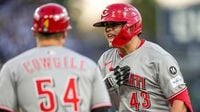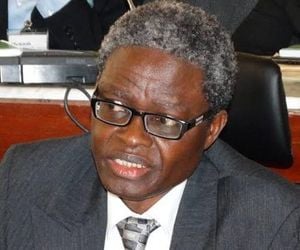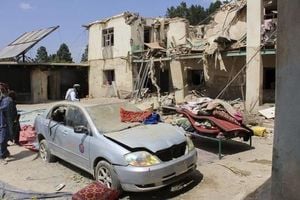The Cincinnati Reds capped off a rollercoaster 2025 season by clinching their first playoff berth since 2020, an achievement that injected a fresh wave of optimism into a franchise eager to turn the page under new manager Terry Francona. But as the dust settles from a quick postseason exit at the hands of the Los Angeles Dodgers, the organization is staring down a pivotal offseason, brimming with tough decisions, tantalizing opportunities, and lingering questions about the club’s direction heading into 2026.
Let’s set the scene: The Reds finished with 83 wins, enough to sneak into the National League Wild Card Series, but not nearly enough to mask the team’s glaring deficiencies. Offensively, Cincinnati lagged behind much of Major League Baseball, ranking 21st in home runs (167), 24th in weighted runs created (92 wRC+), and a lowly 28th in hard-hit rate (38.2 percent). Their situational hitting woes were especially pronounced, managing just a 3-12 record in extra-inning games. As president of baseball operations Nick Krall bluntly put it, “We struggled in some (areas) with the offense. We’ve struggled with defense as well. So we’ve got to improve both aspects of our position players.”
Despite the offensive shortcomings, there were bright spots. Miguel Andujar, acquired at the Trade Deadline, became a revelation in the second half, slashing .359/.400/.544 and posting a 159 wRC+—good for 14th among all MLB hitters with at least 100 plate appearances after August 1. Andujar’s bat proved invaluable, but his glove remained a liability, as evidenced by his -7 Outs Above Average defensive metric. At age 30 and with defensive limitations, Andujar is now viewed as a designated hitter-only option. His future in Cincinnati is clouded by a crowded roster and looming free agency, but there’s no denying his offensive spark was critical down the stretch.
“At his best, Andujar’s bat is invaluable, and it’s one the team can ill-afford to lose,” one local columnist observed. Yet, with a first base logjam between Spencer Steer and Sal Stewart and an outfield overflowing with options, fitting Andujar onto the 2026 roster without sacrificing flexibility is no easy feat. The Reds’ payroll situation, however, may offer some wiggle room: with more than $30 million in average annual value set to come off the books as Nick Martinez, Emilio Pagán, and Wade Miley hit free agency, the front office could theoretically bring back both Andujar and fellow trade acquisition Zack Littell without breaking the bank.
But the questions don’t end there. The Reds’ greatest strength—starting pitching—has suddenly become both a blessing and a dilemma. While the team was bounced early by the Dodgers, Cincinnati now boasts a surplus of arms, including All-Stars Hunter Greene and Andrew Abbott, innings-eater Brady Singer, lefty Nick Lodolo, and rookie sensation Chase Burns, who dazzled in his eight-start debut. Rhett Lowder, Julian Aguiar, and Brandon Williamson—all of whom missed most or all of 2025 due to injuries—are expected back in 2026, swelling the rotation depth to eight legitimate options for five spots. And that’s not even counting depth arms like Chase Petty.
“You can come up short real fast if you start looking to move pitching,” general manager Brad Meador cautioned, echoing Krall’s earlier sentiment: “I wouldn’t say no, but when you trade pitchers you’ve got to go (back)fill them somehow. We all know how it works, where you run out of innings at some point in the season, guys get hurt, things happen.”
Still, the temptation to deal from this position of strength is real. Hunter Greene, a two-time Opening Day starter and 2024 All-Star, is signed through 2028 with $42 million guaranteed and a club option, making him one of the most attractive trade chips in the league. Trading Greene could bring back a much-needed power bat or free up salary to pursue a big hitter in free agency. But there’s risk—Greene’s electric arm comes with a history of injuries, never surpassing 150 1/3 innings in a season, and the Reds’ own injury history among young arms means depth can evaporate quickly.
Krall, for his part, is keeping his cards close to the vest, saying, “I don’t want to speculate on anybody that’s going to get traded or not traded at this point. Because we haven’t had any conversations with other clubs. I don’t know what the needs are out there. I don’t know what people are available as well.” The front office is well aware that any trade involving Greene must return Major League-ready talent, not just prospects, if the Reds are to contend in 2026.
Meanwhile, the bullpen—once a source of concern—found its groove late in 2025. Closer Emilio Pagán (2.88 ERA, 32 saves) and setup man Tony Santillan (80 appearances) anchored a group that will see significant turnover, with Pagán and Nick Martinez headed for free agency. Pagán has expressed interest in returning, but the team’s budget for next year remains uncertain, and the Reds’ knack for unearthing veteran relievers on minor league deals may be tested once more.
Defensively, progress has been incremental at best. The Reds improved from their 2024 low, but still found themselves near the bottom of the league in most metrics. Shortstop Elly De La Cruz led the majors with 26 errors, and the outfield defense was particularly porous, ranking poorly in outs above average (-12) and runs prevented (-11). The trade for Ke’Bryan Hayes, a Gold Glove third baseman, and the emergence of Spencer Steer at first base helped shore up the infield, but there’s no denying that defensive lapses often came at the worst possible times. “We were towards the bottom of the league in defense,” Krall admitted. “We did a good job with defensive efficiency, but our defensive range and everything could be better across the board.”
Financially, the Reds spent just under $120 million on player salaries in 2025 and may have roughly $17 million available for offseason additions, depending on arbitration outcomes and whether any current players are moved. The front office faces the perennial challenge of maximizing impact while working within a constrained budget—a reality that will shape every major personnel decision in the coming months.
As the Reds embark on the offseason, they find themselves at a crossroads. Can they leverage their starting pitching depth to land a game-changing bat? Will they find a way to keep Miguel Andujar’s bat in the lineup despite defensive limitations and roster crunch? Can they rebuild a bullpen and address defensive shortcomings without overspending? And perhaps most crucially, can Terry Francona guide this talented but flawed roster deeper into October in his second year at the helm?
These questions won’t be answered overnight, but one thing is certain: after a season that ended with both promise and disappointment, the Reds’ front office is facing an offseason where every move could tip the balance between another fleeting playoff cameo and a legitimate run at the World Series. The conversation is just getting started in Cincinnati, and the baseball world will be watching closely as the Reds chart their course for 2026.





